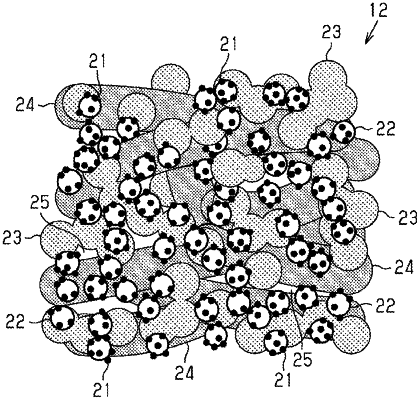| CPC H01M 4/8626 (2013.01) [H01M 8/1004 (2013.01)] | 9 Claims |

|
1. An electrode catalyst layer configured to be bonded to a polymer electrolyte membrane in a polymer electrolyte fuel cell, the electrode catalyst layer, comprising:
a catalyst material;
a conductive carrier, which supports the catalyst material;
a polymer electrolyte; and
a fibrous material, wherein
the electrode catalyst layer includes a three-dimensional network of a flow path,
the flow path includes a plurality of terminal points and a plurality of branches, and each of the branches is an elongated hole connecting a pair of the terminal points,
the branches include a bifurcated branch, one of the pair of the terminal points of the bifurcated branch is connected to another of the branches, and
a number of the branches per unit volume of the electrode catalyst layer is 8500 or more and 13000 or less, and the unit volume is defined as 3.9 μm×3.9 μm×4.4 μm, and
wherein the electrode catalyst layer includes a first surface, a second surface which is a surface facing away from the first surface, and a plurality of through passages which extend from the first surface to the second surface,
a value obtained by dividing a length of each of the through passages by a thickness of the electrode catalyst layer is a tortuosity, and
in a histogram of the tortuosity with a class width of 0.01, a mode value is 1.8 or more and 2.8 or less.
|